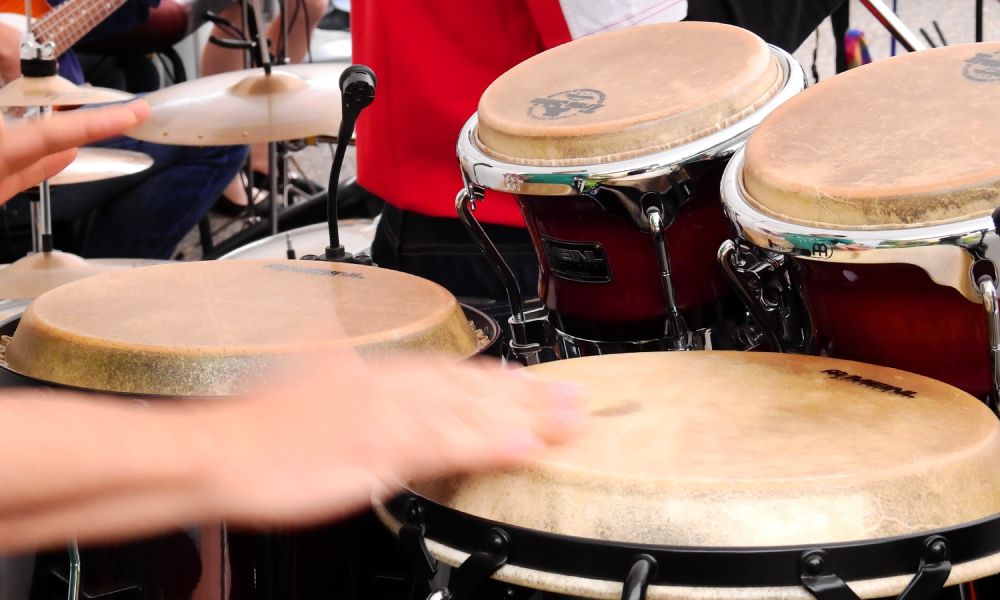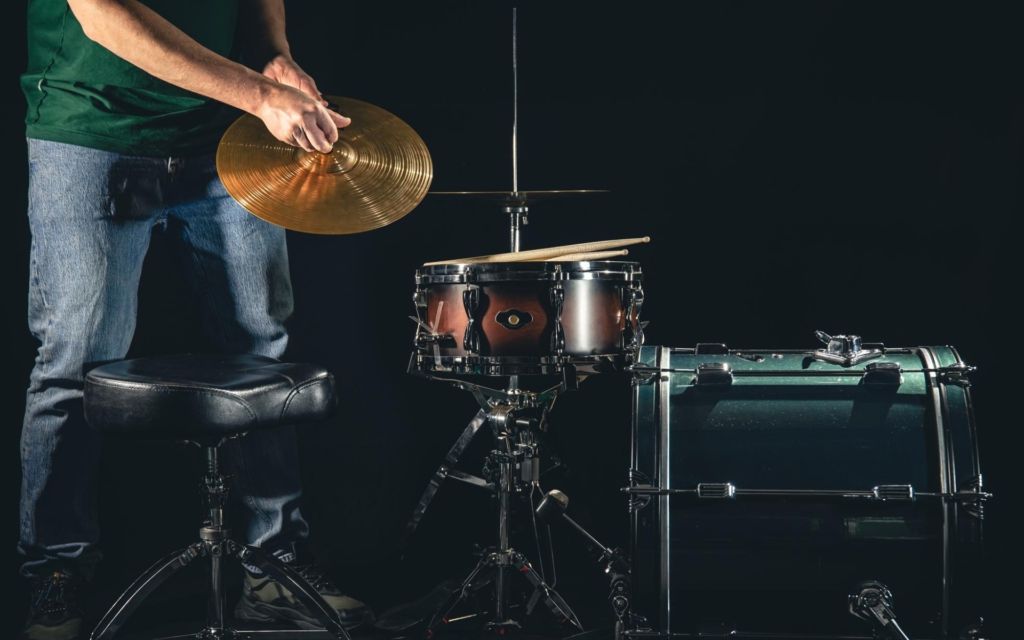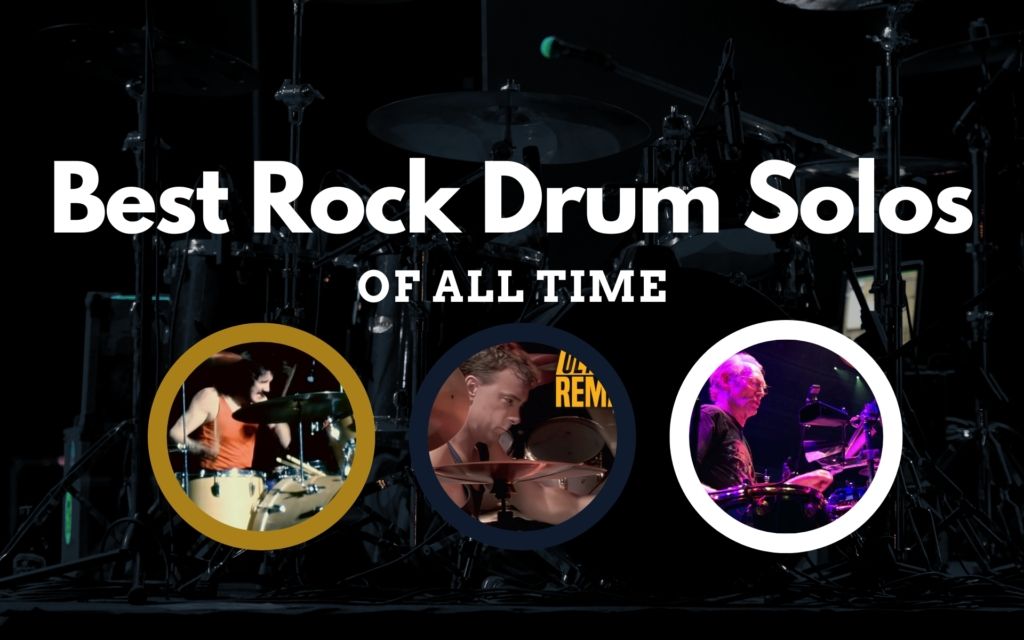Congas and bongos are two widely popular percussion instruments. People often confuse them for each other, though. While they’re fairly similar in some ways, they’re mostly very different in others.
The main differences are that bongos are smaller and higher-pitched while congas are larger with lower-pitched sounds. Congas are also much heavier, and bongos are easier to carry around.
Let’s take a deeper look at the differences between the two types of drums. We’ll see how the size affects the sounds, as well as explore how the playing techniques are different between the two.
Conga vs Bongo Drums
Size
The easiest way to differentiate the two instruments from each other is to look at their size. Bongos are the smaller of the two. They’re small enough to place them in your lap and play while sitting down. Bongo drums typically range between 6 and 10 inches in size, and one of them is always smaller than the other.
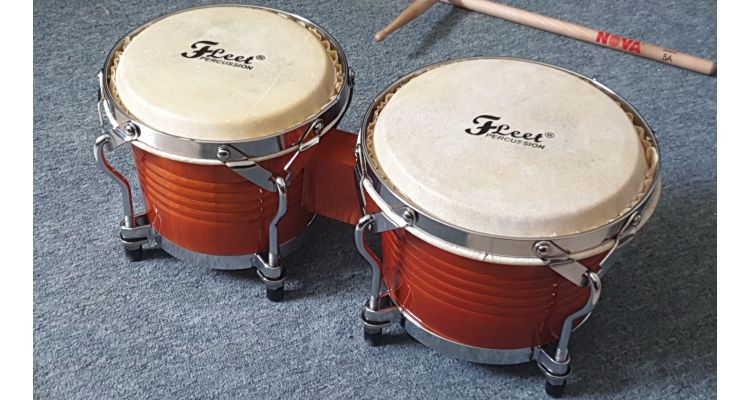
One of the defining characteristics of bongos is the bridging piece of wood that connects them together. You’ll always have this, meaning that bongos always come in pairs.
Congas are much larger, having deeper shells and wider diameters. Unlike bongos, you can get single conga drums. However, most percussionists tend to use two congas that are mounted onto a single stand. The playing surface size of congas ranges from 10 to 14 inches.
Sounds
Since congas are much larger, they produce a deeper sound than bongos. The sounds that come from congas are quite warm, exhibiting mellow bass tones.
Bongos have stronger attacking sounds. This comes as a result of the small size and tight skin on the surface. The sounds are higher pitched than the sounds from congas.
Congas also resonate for longer due to their larger size. The sound from a bongo is short and punchy.
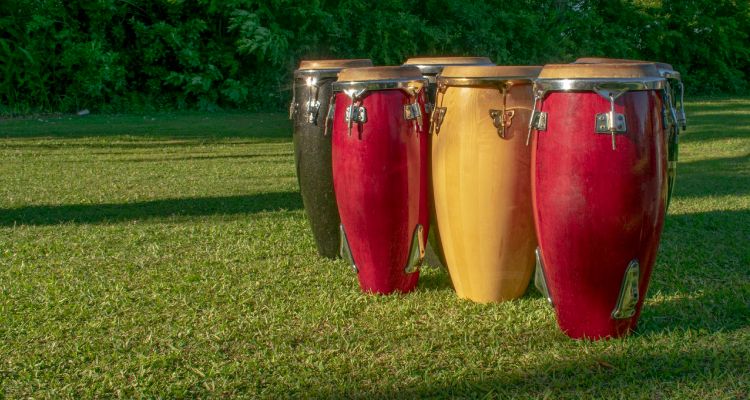
You can hit the rims of both types of drums to get a strong accented sound. The sound that comes from a conga will have a bit more tonal depth behind it while the accented bongo sound is fairly thin.
Price
Congas are much more expensive than bongos. Since congas are larger and bulkier, they cost more to make. In turn, this increases the prices that they’re sold for.
You can find some affordable congas that cost less than $100. However, they won’t offer the same rich tones that the higher-quality congas do. It’s quite common for cheap congas to only produce one sound no matter where on the surface you hit them. Also, take note that you may want to buy two of them, so the price will double.
On the other hand, you can easily find a top-quality set of bongos for less than $100. The most expensive set of bongos cost around $400 while the most expensive set of congas cost over $1000.
Another thing to note is that higher-priced bongos and congas are generally tunable while lower-priced ones aren’t. If you want to have some control over how the drums sound, it’s better to pay extra for ones that you can alter the pitches of.
Playing Technique
Bongos require heavy usage of your fingers to play them. If you ever play a set of bongos, you’ll notice how easily they produce tones with light finger taps. So, you don’t need to use your palms to play them.
Percussionists will use more of their hands to play the congas. To get a bass tone, they’ll strike the conga in the center with a flat hand. To get a louder open tone, they’ll use their fingers to strike the edge of the conga.
One of the shared techniques between playing each type of drum is to leave your hand on the skins after striking them. This will provide a muted sound.
Ease of Use
While both congas and bongos have slight learning curves, they’re quite easy to get a grip on after playing them for a while. There are some harder techniques that you can learn somewhere down the line, but those aren’t necessary to learn at the beginning.
In terms of accessibility, bongos are much easier to get since they’re smaller. Walking out of a music shop with a pair of bongos will be easier than it would with a pair of congas. This also means that bongos are easier to take to gigs.
Popularity
Bongos are the clear winner in the popularity contest. Think about how most non-musicians call any hand drum, no matter what it is, a bongo. There’s even a stereotype of a classic college kid carrying around a pair of bongos on campus.
The lower prices and easier accessibility also add to the popularity of bongos over congas. Both drums originated in Cuba, but bongos have always taken the spotlight over the years.
Which is Easier to Learn?
Congas and bongos have relatively similar learning processes. So, one of them isn’t easier to learn than the other. However, there are different ways of playing them as mentioned above.
Some people may find that bongos are easier to play as they have nimble fingers while others will prefer how it feels to play drums flat-handed.
Percussionists very rarely only play one or the other. So, if you’re looking to learn how to play one of them, it would be good to learn how to play the other as well.
Can Drummers Play Congas and Bongos?
The great thing about being a drummer is that the rhythmic skills you learn behind the drum set tend to transfer very easily over to other instruments. So, drummers tend to learn how to play bongos and congas fairly quickly.
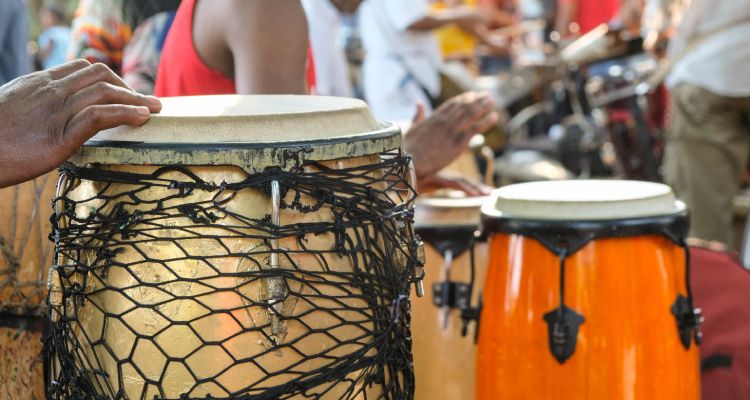
If you’re wondering whether drummers can integrate bongos and congas into their drumming setups, that can be a bit more complicated to pull off. It’s not impossible, though. It’s easier to incorporate bongos into a drum kit set up as auxiliary percussion than it is to incorporate congas due to their size.
Bongos can be played with drum sticks. However, the drummer would need to be careful not to play too hard as the sticks can tear through the bongo skins easily.
If a drummer wanted to use congas, he’d either need to use mallets to get the deep tones that congas are known for, or he’d need to put his sticks down to play the congas with his hands.
Playing Them Together
The most common setup for playing these drums together is to have the bongos on a stand that is raised slightly higher than the height of the congas. The bongos will then be placed in front of the congas. This gives a comfortable setup with 4 drums in front of the percussionist.
If you buy a set of congas, the purchase will typically include a stand. Bongos never come with a stand. You need a specific stand for the bongos, and you’ll need to buy that separately to achieve the bongo and conga setup.
Conclusion
While the two types of drums have several differences, they’re typically used in conjunction with each other. They have the same origin, so Cuban music that popularized these instruments had both playing in the songs.
They’ve stuck together over the years as bongos and congas have been used in other types of music. The playing style required is also very similar apart from a few hand technique differences.
If you’re wondering whether the drum you’re looking at is a bongo or conga, just remember that bongos are the small ones while congas are the larger drums.
Contents

